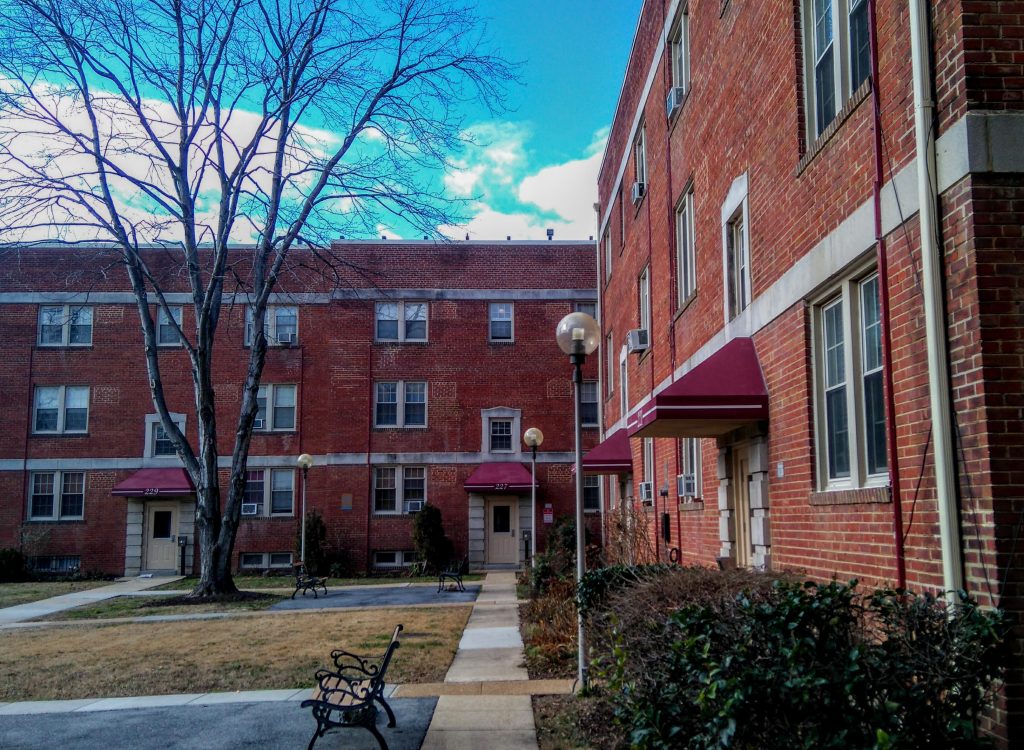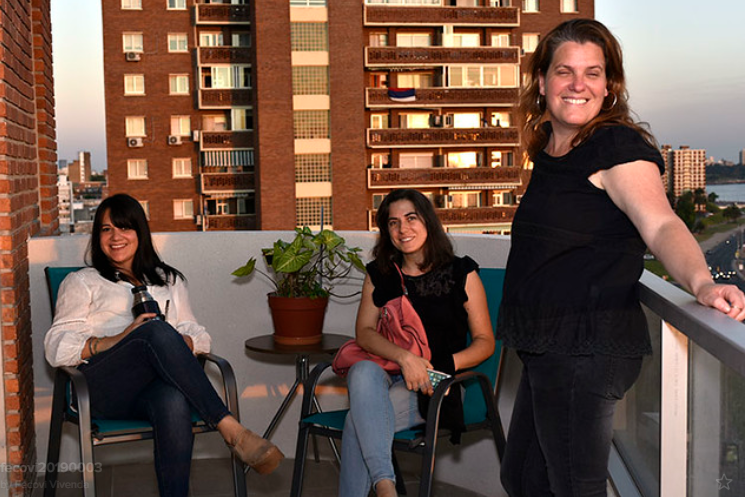Cooperative Housing Models
This page examines various cooperative housing models, showcasing their practical approach to addressing housing challenges worldwide. As urban populations grow and housing affordability becomes a significant issue, cooperative housing offers a solution that emphasizes community and collaboration. We uncover the principles and practices that make cooperative housing an important solution for today’s housing needs.
Non-Profit Rental Cooperatives
Non-profit rental cooperative housing is a form of housing where residents collectively own and manage their living environment, typically with a focus on affordability and community. Here are the key characteristics:
Collective Ownership:
Residents are members of a cooperative that owns the property. This structure allows them to have a say in management and decision-making processes.
Non-Profit Model:
The cooperative operates on a non-profit basis, meaning any surplus revenue is reinvested into the property or community rather than distributed to shareholders or owners.
The primary goal is to provide affordable housing, not to generate profit.
Affordability:
Housing co-ops typically set rents below market rates to improve access for low- and moderate-income individuals and families. Residents usually pay around 30–35% of their income in rent. Many co-ops also offer sliding scale rent based on income, further increasing affordability.
Democratic Governance:
Residents help run the cooperative by electing a board and participating in decision-making. This democratic structure encourages active community involvement and strengthens accountability. Together, residents make decisions about maintenance, improvements, and policies, building a strong sense of ownership and shared responsibility.
Shared Resources:
Co-ops often offer shared amenities like community gardens, laundry facilities, and common areas where residents gather and connect. These shared spaces actively promote interaction and strengthen community bonds.
Long-Term Stability:
Non-profit rental cooperatives prioritize long-term housing stability and actively protect residents from market-driven displacement. They ensure security of tenure, allowing members to stay in their homes without the risk of sudden rent hikes or eviction. When members move out, the co-op returns their shares and deposits, supporting personal financial stability.
Community and Diversity:
Mixed-income housing creates diverse communities by bringing together people from different socioeconomic backgrounds. Non-profit cooperatives actively contribute to their neighborhoods through community service and development efforts, building stronger local ties and supporting grassroots initiatives.
Active Participation:
Residents take an active role in the cooperative’s activities and governance, fostering a strong sense of belonging and shared responsibility.
Regulatory Support:
Governments often support non-profit rental cooperatives through programs and grants that promote affordable housing and community development.
Common in Various Countries:
Countries like Germany, Switzerland, and Canada actively implement this model to expand access to affordable housing.

Ownership (Equity)
The ownership cooperative housing model (often called an equity cooperative) is a housing arrangement where residents collectively own and manage their housing. Each resident is both a member and a shareholder in the cooperative corporation, providing them with rights to occupy a specific housing unit. Below is an elaboration on key aspects of this model:
In an ownership cooperative, residents hold shares in the cooperative corporation, which grants them equity in the property. While they do not directly own their units, the value of their shares can appreciate over time, similar to traditional homeownership. This model allows residents to build equity, but ownership remains collective, meaning that members share in both the benefits and responsibilities of managing the property.
Equity
Collective Equity Building:
Residents accumulate equity through their shares, which can appreciate as the property increases in value. This can provide financial benefits, but equity is tied to the cooperative as a whole rather than to individual units.
Equity vs. Traditional Homeownership:
While residents do not own their unit outright, they own a portion of the overall cooperative, distinguishing this model from rental housing or other forms of cooperative ownership like limited-equity cooperatives.
Access to Equity
The ability to access and cash out equity in an ownership cooperative depends on local laws and the cooperative’s policies. Members can sell their shares when they move out, often at market value, allowing them to capture any appreciation in the property. However, the cooperative’s bylaws might regulate how much equity can be withdrawn or sold, sometimes limiting speculation to preserve affordability for future members.
Selling Shares:
When a resident decides to leave the cooperative, they can sell their share in the corporation, often for a price that reflects the market value of the housing unit they were occupying.
Equity Liquidity:
While members can access equity through the sale of their shares, they usually cannot access it in the form of a loan or mortgage like in traditional homeownership, as the property is collectively owned.
A Shareholder with Exclusive Use of a Housing Unit
Each resident in an ownership cooperative is a shareholder in the cooperative corporation, and in exchange for their shares, they are granted exclusive use of a specific housing unit. However, they do not own the unit itself, but rather, the right to live there as long as they hold their shares.
Exclusive Use Rights:
Shareholders have the exclusive right to live in their assigned unit and are responsible for its upkeep, similar to owning a condominium.
Cooperative Governance:
Though residents have exclusive rights to their units, decisions about the property, common areas, and overall management are made collectively through a democratic voting process, ensuring that no single resident has disproportionate control over the property.
Corporation Owns the Property
The cooperative is owned by a corporation, of which all residents are shareholders. This corporation holds the deed to the property, including both the individual units and the common spaces.
Corporate Ownership Structure:
The cooperative corporation, made up of the residents, owns the entire building or housing development, creating a shared responsibility for its management, maintenance, and financial sustainability.
Collective Responsibility:
All members share in the responsibility of maintaining the building and ensuring its financial health, with decisions made through democratic voting.
Collective Ownership of Common Spaces
In addition to their individual units, cooperative members collectively own and manage the common areas of the property, such as lobbies, hallways, recreational areas, and gardens. These spaces are shared by all residents, reinforcing the community-oriented nature of cooperative housing.
Shared Maintenance:
Residents collectively pay for the maintenance, repairs, and improvements of common areas, with costs typically divided among members based on the size of their shareholdings or unit size.
Community Living:
The collective ownership of common spaces encourages a sense of community and shared responsibility among residents, fostering collaboration and mutual support.
Long-Term Affordability is Not Guaranteed
One of the drawbacks of the ownership cooperative model is that long-term affordability may not be guaranteed, especially in cases where shares can be sold at market rates. Over time, the value of shares can increase significantly, which might price out potential future residents from lower-income brackets.
Market-Driven Appreciation:
Unlike limited-equity cooperatives, which cap the resale price of shares to maintain affordability, ownership cooperatives often allow shares to be sold at market value, potentially making the housing less affordable for future buyers.
Challenges to Affordability:
Without mechanisms to control rising costs, cooperatives in high-demand areas may see sharp increases in share prices, reducing access to affordable housing over time.
Pro-Rata Share of Operating and Maintenance Costs
Members of an ownership cooperative are responsible for a pro-rata share of the operating and maintenance costs of the property. These costs typically include utilities, repairs, property taxes, insurance, and any other expenses necessary for maintaining the property and common areas.
Shared Expenses:
Costs are divided among members based on the size of their shares or units, ensuring that each resident contributes to the upkeep of the property.
Monthly Fees:
These operating costs are typically paid through monthly fees, similar to homeowner association (HOA) fees, which cover day-to-day expenses and reserve funds for major repairs or improvements.
At-Cost Housing
Ownership cooperatives operate on a non-profit basis, meaning that housing is provided “at cost” rather than for profit. The cooperative’s goal is to cover its operating expenses without generating a profit, keeping housing costs lower than in traditional for-profit housing models.
Non-Profit Model:
The cooperative charges residents only enough to cover the costs of maintaining and operating the property, ensuring that housing remains more affordable compared to market-rate housing.
Cost Transparency:
Members have a direct say in setting the budget and deciding how money is spent, which promotes financial transparency and accountability.
Common in Sweden, Norway, USA
The ownership cooperative model is particularly popular in countries like Sweden, Norway, and the United States, where it has been successfully implemented in various urban and suburban contexts.
Sweden and Norway:
In these countries, the ownership cooperative model is widespread and often seen as a mainstream option for homeownership, particularly in urban areas where it provides a balance between affordable housing and equity building.
USA:
While not as common as in Scandinavia, the ownership cooperative model has a long history in the U.S., particularly in cities like New York, where cooperative housing provides an alternative to traditional condominiums and single-family homes. In the U.S., many housing cooperatives were established during the mid-20th century, and they continue to be a viable option in some regions.
In Summary
The ownership cooperative housing model offers a unique blend of collective ownership and individual rights, making it an attractive option for those seeking affordable housing with the potential for equity growth. However, the model’s long-term affordability and accessibility can be affected by market forces, making it important for cooperatives to carefully consider governance and resale policies to balance equity building with maintaining affordability for future members.
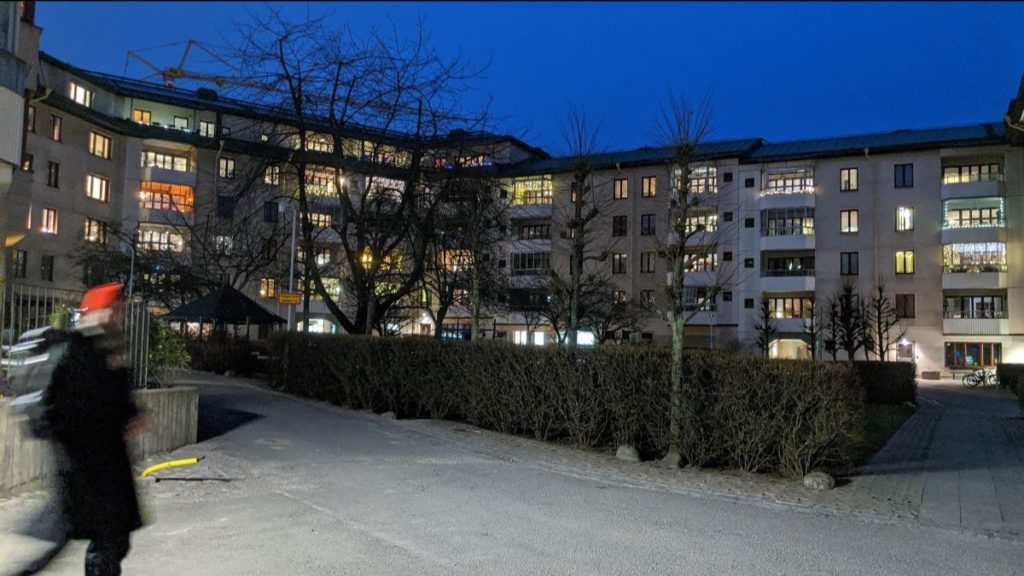
Limited Equity
A Limited Equity Housing Cooperative (LEHC) is a housing model designed to keep homes affordable for both current and future residents. It is structured to limit the resale value of shares, ensuring that the price of homes in the cooperative remains accessible over time, even as surrounding property values increase. Below is a detailed explanation of the key aspects of this housing model:
Restricted Price of Shares Bought and Sold
In a limited equity cooperative, the price at which members can buy or sell their shares is restricted. This limitation is designed to prevent rapid increases in housing costs, ensuring that the cooperative remains affordable for future buyers. The cooperative’s bylaws typically specify how much the value of shares can appreciate over time, keeping the housing price within reach of lowto moderate-income individuals.
Affordability Across Generations:
By restricting the resale value of shares, LEHCs ensure that housing remains affordable across generations, providing long-term housing stability. Unlike traditional homeownership, where market forces can drive up prices, this model protects against speculation and gentrification, allowing residents to pass on affordable housing to others.
Equity with Limits:
While members build some equity, the focus of a limited equity cooperative is on affordability rather than wealth generation. Shareholders may sell their shares for a modest profit, but the primary goal is to keep housing costs stable for future generations.
An Affordable Option for Generations
LEHCs offer an enduring solution to housing affordability, particularly in high-demand areas where housing prices tend to rise rapidly. By capping the resale value of shares, LEHCs prevent market-driven price surges and help ensure that housing remains accessible to lower-income households for decades. This long-term affordability makes LEHCs an attractive option for individuals and families who might otherwise be priced out of the housing market.
Generational Access:
Future generations of low to moderate-income residents can benefit from the affordable housing provided by LEHCs, contributing to housing stability over the long term. As older residents move out, new residents can join the cooperative at an affordable price, keeping the housing model sustainable.
May Be Restricted to Low or Moderate Incomes
Many LEHCs are designed to serve individuals and families with low or moderate incomes. Eligibility for membership may be determined based on income guidelines, ensuring that the cooperative remains an affordable option for those most in need of housing assistance. These income restrictions help maintain the cooperative’s mission of providing housing to underserved populations.
Income-Based Membership:
In some cases, membership may be restricted to people below a certain income threshold, ensuring that housing remains available to those who would struggle to afford housing in the private market.
Subsidized Financing:
Often, LEHCs are supported by government subsidies or non-profit organizations, which provide favorable financing terms or tax breaks to help keep the housing affordable. These subsidies may come with additional requirements, such as limits on residents’ incomes.
Democracy
One of the core principles of limited equity cooperatives is the active participation of its members. Since the cooperative is owned and managed collectively, all members are expected to take part in decision-making processes. This can include attending meetings, serving on committees, and contributing to the overall governance of the cooperative. Participation is crucial for maintaining the cooperative’s operations and ensuring that decisions reflect the collective will of the members.
Democratic Governance:
Members have a say in the management of the cooperative, voting on important issues like budgeting, repairs, and community policies. This participatory model fosters a sense of ownership and responsibility among residents.
Community Building:
Active involvement helps strengthen the community by encouraging collaboration and cooperation among members. Residents are not just tenants; they are co-owners, invested in the well-being of the entire cooperative.
Community
LEHCs foster a strong sense of community among members, as residents work together to manage and maintain their shared living environment. This sense of community is often a key reason why people choose to live in cooperatives. In an LEHC, the collective ownership structure encourages collaboration and mutual support, with residents building long-term relationships with their neighbours.
Shared Spaces and Resources:
Members of LEHCs typically have shared access to common spaces and amenities, such as gardens, playgrounds, or meeting rooms, which enhances the community atmosphere. These shared areas are managed collectively, with decisions made through democratic processes.
Mutual Support:
The cooperative model often attracts like-minded individuals who value cooperation and mutual support. This can lead to a stronger sense of community cohesion compared to more traditional housing arrangements.
Common in the USA
Limited equity cooperatives are a well-established housing model in the United States, particularly in cities with high housing costs like New York, Washington, D.C., and San Francisco. They were originally developed as a way to provide affordable housing to lowand middle-income residents, often supported by government programs or non-profit organizations. Today, they continue to offer a viable alternative to market-rate homeownership, helping to preserve affordable housing in areas where prices are rising.
New York City:
New York City is home to a large number of limited equity cooperatives, many of which were established during the mid-20th century as part of efforts to provide affordable housing for the working class. These cooperatives have proven resilient, offering affordable housing options even in a city where real estate prices have skyrocketed.
Government and Non-Profit Support:
In the U.S., LEHCs are often supported by government funding or non-profit organizations, which help with initial financing, ongoing subsidies, or technical assistance to ensure the long-term viability of the cooperative.
Summary
Limited equity housing cooperatives are an innovative and affordable housing solution most commonly found in the United States. By limiting the resale value of shares, ensuring active participation, and fostering a sense of community, LEHCs provide a stable and affordable housing option for generations.
Mutual Aid
Mutual Aid Housing Cooperatives (MAHCs) represent a powerful model of collective housing rooted in solidarity, self-help, and democratic participation. Originating in Uruguay, this model has spread across South and Central America, offering an alternative to traditional housing systems by emphasizing housing as a human right. Here’s an in-depth look at the key principles and features of Mutual Aid Housing Cooperatives:
Solidarity and Self-Help
At the heart of MAHCs is the principle of solidarity and self-help. Members work together to build and maintain their homes, pooling resources and labour to create affordable, sustainable housing for everyone in the cooperative. This approach reduces construction and maintenance costs and strengthens social bonds within the community.
Solidarity means that members support one another, sharing skills, labour, and resources to achieve common goals. This cooperative spirit ensures that no one is left behind, and everyone contributes according to their ability.
Self-help encourages active participation in the building and management of the cooperative. Members often contribute “sweat equity” by participating in the construction or upkeep of their homes, which reduces costs and fosters a sense of ownership and pride.
Principle of Housing as a Human Right
Mutual aid housing cooperatives are founded on the belief that housing is a fundamental human right, not a commodity. This principle underpins the entire model, ensuring that access to adequate housing is prioritized over profit. By removing housing from the speculative market, MAHCs help combat the housing crises that plague many regions.
The model focuses on providing dignified, secure, and affordable housing for members, regardless of their economic background. Through collective ownership and management, residents are protected from eviction and rising rents, both common in speculative housing markets.
Democratic Participation
A key tenet of MAHCs is democratic participation. Democratic governance ensures that the cooperative operates in the best interest of its members, fostering transparency, accountability, and inclusivity. Members have an equal say in all decisions, from day-to-day operations to long-term planning. This model empowers residents to take control of their housing conditions and make decisions that directly impact their lives
One Member, One Vote:
Each member has equal voting rights, regardless of their financial contribution or seniority. Decisions are made collectively, with open discussions and majority voting processes.
Self-Managed and Self-Built
MAHCs are often self-managed and self-built, meaning that members take on both the construction and the ongoing management of their homes. This aspect of the cooperative is crucial for ensuring affordability and fostering a sense of ownership and responsibility among members.
Self-Built Housing:
In many MAHCs, members contribute their labour to the construction of the cooperative’s housing units. This reduces costs and strengthens the community as members work together to create their homes. External professionals may be brought in for specialized tasks, but much of the work is done by the members themselves.
Self-Management:
After construction, the cooperative is managed collectively by its members. This includes decisions about maintenance, finances, and communal activities. By self-managing, cooperatives can keep costs low while ensuring that decisions reflect the needs and desires of the community.
Cooperative is the Owner
In a Mutual Aid Housing Cooperative, the cooperative itself is the owner of the property. This collective ownership structure prevents individual members from selling or profiting from the housing. Instead, the focus remains on maintaining affordability and preserving the cooperative’s mission of providing housing as a common good.
Collective Ownership:
Collective ownership ensures that the cooperative is not subject to market forces. Members do not own individual units but have the right to live in their homes for as long as they are members in good standing of the cooperative. This system protects the cooperative from gentrification and real estate speculation.
Long-Term Affordability:
One of the primary goals of MAHCs is to facilitate access to adequate housing for low- and middle-income families. By pooling resources and sharing labour, these cooperatives provide housing that is affordable and of good quality.
Common in Uruguay and Spreading Throughout South and Central America
The mutual aid housing cooperative model has its roots in Uruguay, where it has become a widespread and successful approach to solving housing affordability. Over the past few decades, this model has expanded across South and Central America, where it is increasingly adopted in countries facing similar housing challenges.
Uruguay’s Success Story:
In Uruguay, MAHCs were born out of a need to provide affordable housing during periods of economic hardship. Supported by government policies and strong grassroots movements, the model has thrived, providing thousands of homes for families.
Growing Influence in Latin America:
Countries such as Bolivia, Paraguay, and El Salvador are now implementing MAHCs, seeing them as a viable solution to address housing shortages. As the model spreads, it continues to adapt to local contexts while retaining its core principles of solidarity, affordability, and democratic participation.
Summary
Mutual aid housing cooperatives offer a powerful, community-driven alternative to the dominant market-based housing systems. By embracing solidarity, self-help, and democratic governance, MAHCs provide secure, affordable housing based on the principle that housing is a human right. Their expansion throughout South and Central America demonstrates the adaptability and success of this model in meeting the housing needs of diverse communities.
Mutual Home Ownership
Mutual home ownership societies are cooperatives designed to ensure permanent affordability for residents. Unlike traditional housing ownership models, where market forces drive property prices, these cooperatives maintain housing at cost by collectively managing the property. This structure helps to secure long-term affordability and shields residents from speculative price increases, making it a sustainable housing option.
Democratic Control and Resident Empowerment
In a mutual home ownership cooperative, each member holds a lease and has an equal voice in the decision-making process. Democratic control means that members collectively manage the cooperative, deciding on policies, maintenance, and financial matters, giving everyone a stake in the success and sustainability of the community.
Equity Shares and Retained Ownership
Members contribute to the cooperative by paying an equity share, which gives them a stake in the property. They retain equity in the scheme, meaning that as long as they remain members, they hold financial ownership in the cooperative. This model enables residents to build equity over time, which fosters a sense of stability and personal investment in the community.
Affordable Monthly Fees Linked to Income
Members pay a monthly fee set at around 35% of their net income. This fee covers both the mortgage and operational costs of the cooperative. By tying the fee to income levels, the cooperative ensures affordability for all members, regardless of their financial situation. This income-based approach promotes inclusivity and housing access for a broader range of individuals and families.
Flexible Equity and Financial Adaptability
As members’ situations change, so can their equity shares. When someone leaves, others can buy additional shares. If a member’s income shifts, their share amount adjusts. This flexibility allows the cooperative to adapt to members’ changing financial needs.
Retaining Equity for Long-Term Stability
To promote long-term commitment, members who leave before three years do not benefit from any equity gains. The cooperative keeps a portion of the increased value. This retained equity strengthens the co-op’s finances and keeps housing affordable for future members.
Example: LILAC – Mutual Home Ownership in Leeds, England
LILAC (Low Impact Living Affordable Community) in Leeds shows this model in action. It’s a mutual home ownership co-op focused on sustainability and affordability. Residents manage the community democratically, sharing decisions and responsibilities. By blending shared ownership with eco-conscious design, LILAC offers a proven path for similar housing projects.
For more details on how LILAC operates and its impact on the community, be sure to read our in-depth article on the project.
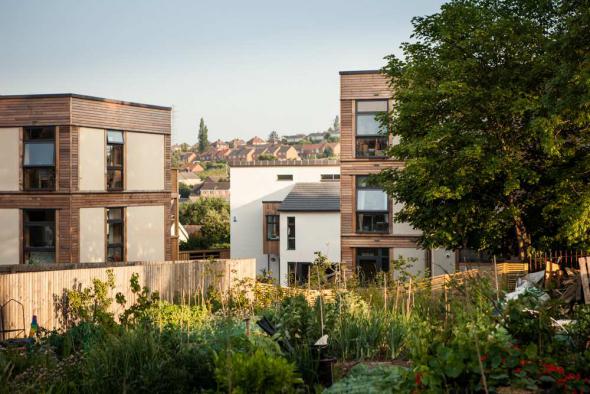
Right-of-use
Right-of-use housing cooperatives operate on a collective ownership model, where the cooperative owns the building or complex. While individual members do not own their units outright, they gain the right to occupy a specific unit through membership in the coop. This structure ensures that the property remains under cooperative control, preserving affordability and protecting it from speculative market forces.
Mutual Agreement on Unit Occupancy
Members hold the right to live in a designated unit for as long as they remain part of the cooperative, without individual ownership of the space. Unit allocation is based on mutual agreements, fostering a sense of community and shared responsibility among members. This arrangement emphasizes housing stability and security, qualities often lacking in traditional rental markets.
Coop Builds and Owns the Property
The cooperative takes charge of developing and constructing the building. Once finished, it owns the entire property. Members fund the development collectively or secure external financing, allowing the cooperative to deliver well-planned, high-quality housing. With collective ownership, residents control decisions about maintenance and future planning.
Land Ownership: Private Grants or Symbolic Municipal Leases
The cooperative may own the land outright or operate under special arrangements. In many cases, municipalities grant land at a symbolic price or offer long-term leases to lower housing costs. These agreements help coops access land without competing in the open real estate market.
Access to Affordable and Decent Housing
Right-of-use cooperatives keep housing costs low. Instead of buying property, members pay monthly fees based on real costs—maintenance and operations—not market rents. This keeps housing affordable and aligns with the cooperative’s mission: stable, long-term housing for all members.
Protection Against Speculation
These cooperatives separate unit use from property ownership. As a result, members avoid the impact of rising real estate prices. The property stays in collective hands, serving the community—not the market.
Secure, Long-Term Tenure
Members don’t own their units but have the right to stay indefinitely, as long as they follow co-op rules. This setup provides long-term security without the debt of ownership. Members also help govern the co-op, giving them a real voice in how it’s run.
Low Entry Costs
Joining a right-of-use co-op is affordable. Instead of a hefty down payment, members pay a modest share or fee. This opens the door to more people, making housing more inclusive.
Shared Decision-Making
Members make decisions together—on management, maintenance, and policy. Everyone has an equal vote. This builds strong communities and ensures decisions reflect collective needs.
Cooperative Ownership
The cooperative owns the homes—and keeps them. This prevents them from becoming private property. As a result, speculation is blocked. No one can profit by renting or selling the homes. Instead, members co-own the cooperative and take part in managing it. This model encourages involvement and shared responsibility. Unlike public housing, it builds strong engagement from those who live there.
Affordable Monthly Payments
Members pay monthly fees based on real costs, not market rates. These payments cover building maintenance and operations. Since the model runs at cost, it stays affordable. Any extra money goes back into the cooperative—not into private profits.
Long-Term Affordability
Right-of-use cooperatives protect against rent hikes. They don’t follow market trends. This keeps housing stable and affordable over time. Future generations benefit from the same protections and access.
Common in Denmark and Catalonia, Spain
These co-ops are well established in Denmark (see andelsbolig) and Catalonia, Spain. For example, Sostre Cívic is a leading group in the region. Their success shows how right-of-use co-ops reduce dependence on the private rental market. In turn, they build stronger communities and support local democracy.
Summary
Right-of-use housing co-ops offer a real alternative to ownership and renting. They keep housing affordable, block speculation, and strengthen community control. This model puts people before profit—and secures housing for the long term.
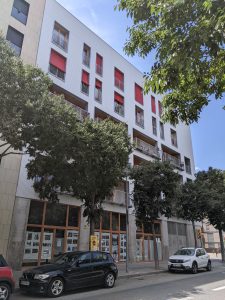
Andelsbolig
An ‘andelsbolig’ in Denmark is a unique form of cooperative housing that operates differently from traditional homeownership. Here are some key features:
Cooperative Structure
When you buy an andelsbolig, you’re purchasing a share in a housing cooperative that owns and manages the entire building—not the apartment itself. This share gives you the right to live in a specific unit and take part in the cooperative’s decision-making and governance.
Affordability
The price of ‘andelsbolig’ is typically set below market value. This helps maintain affordability for current and future residents. The cooperative often aims to keep housing costs manageable.
Financing
Buyers can obtain a mortgage from a bank for the purchase, similar to traditional property ownership. The financing process can be more accessible due to the lower purchase price compared to conventional apartments.
Community Living
Residents participate in the cooperative’s decision-making processes, including maintenance, budgeting, and community activities. This fosters a sense of community and shared responsibility among residents.
Regulations and Management
Each cooperative has its own rules and regulations, which govern aspects like renovations, pet ownership, and membership. The cooperative board, elected by residents, oversees management and operations.
Resale Restrictions
When selling an ‘andelsbolig’, the cooperative typically regulates the sale price to ensure it remains affordable. This can limit profit potential for sellers but helps sustain the cooperative’s mission of affordability.
Cultural Significance
‘Andelsbolig’ living is an established part of Danish culture, reflecting a preference for community-oriented and sustainable living arrangements.


